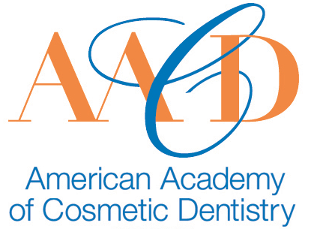What Is Biomimetic Dentistry, and How Does It Benefit You by Stopping or Preventing the Death Cycle of teeth?
While you’re probably familiar with the word “biomimetic,” you may still be wondering why we’re fervently utilizing the biomimetic dentistry approach for serving our patients better. You may also wonder how it’s relevant to dentistry in the first place. To answer your queries, we’ll discuss what Biomimetic dentistry is and how it may benefit you.
What Is Biomimetic Dentistry?
The word ‘biomimetic’ comes from the Greek words mimesis (imitate) and bios (life). In dentistry, it means providing dental care using minimally invasive methods. That is, we aim to preserve your natural teeth by using cutting-edge tools and techniques rather than the conventional way of repairing damaged parts. Given this, we utilize biomimetic dentistry to help our patients keep their teeth strong and healthy for a lifetime while ensuring they retain their natural beauty and functionality.
Tooth preservation and dental conservation lie at the heart of Biomimetic Dentistry.
Biomimetic dentistry, a type of tooth conserving dentistry, treats weak , fractured , and decayed teeth in a way that keeps them strong and seals them from bacterial invasion. In dental practices around the world, Biomimetic Dentistry has practically eliminated cutting teeth down for crowns and destructive root canal treatment.
Patients are happier and often spend less compared to conventional treatment.
Biomimetic Dentistry & The Tooth Cycle of Death
Traditional dental restorations require excessive removal of healthy tooth structure in order to restore the tooth. This weakens teeth and results in what experts in biomimetic dentistry call, “the tooth cycle of death”. This cycle ultimately results in failure and loss of a tooth. Through the use of advanced adhesive techniques, Biomimetic dentistry allows for maximum conservation of tooth structure. As a result, restorations last longer and teeth are retained throughout life.
Traditional Dentistry: Crowns and Silver Amalgam Fillings
The traditional approach to dentistry (silver fillings and crowns) requires excessive tooth preparation (removal of healthy tooth structure) in order to accommodate the minimum thickness of the restorative material. For instance, silver fillings need to be at least 1.5 mm thick in order to withstand chewing forces, and crown restorations typically require at least 1.5mm depending on the type of material used.
Furthermore, traditional dental restorations rely on “mechanical retention”, which means the shape and design of the tooth preparation is responsible for holding the restoration from coming out or falling out. This translates into further removal of healthy tooth structure in order to hold and secure the restoration in place. A tooth which will have crown placed needs to be reduced all around (360 degrees) in order to keep the crown from coming off.
In addition to these drawbacks, traditional restorations are not comparable to natural tooth biomechanics. Silver metal fillings (amalgam fillings) are metal alloys that are nothing like the enamel and dentin of the tooth. They do not restore the strength and biomechanics of natural teeth, so teeth that are restored with these fillings are not restored to their original strength. Even a very small cavity can result in over 40% reduction in strength and the silver filling does not restore the strength of this weakened tooth. Similarly, crown restorations which are made of porcelain fused to metal are extremely stiff and rigid. A natural tooth has just the right amount of stiffness and flex from the fusion of enamel and dentin. With a stiff or rigid restoration, it is no surprise that crowns often fail catastrophically by fracturing at the gumline.
How Does Biomimetic Dentistry Benefit You?
One of Biomimetic dentistry’s greatest benefits is that it ensures your teeth look great and natural. Additionally, it gives you two things that you may not experience with traditional methods — comfort and predictability. Dr. Randhawa believes very strongly in preserving healthy tooth structure with minimally invasive dentistry and to stop the death cycle of the tooth or not let it start?
Given that Biomimetic dentistry involves very minimal preparations, it is often less painful when compared to traditional approaches and results in much less tooth sensitivity after the restoration has been completed. You can feel confident that with Biomimetic techniques, protocols and materials your teeth will remain well-protected in order to help you keep your natural teeth for the rest of your life.
Why Isn’t the Biomimetic Approach More Common?
With all these Biomimetic dentistry benefits, you can’t help but wonder why there seems to be limited disciplines that adopt the same principles. It all boils down to skills, training, experience, preparedness, and patience. Dr. Randhawa has been the first dentist in New Jersey to introduce Biomimetic Dentistry to his patients. Regular insurance based dentistry is very limited in options both for the dentists and their patients as it is all about cost cutting, lot of plan limitations, approving least expensive options and doing dentistry that is maximally invasive and initiates the death cycle of the teeth. To provide our patients the best that dentistry has to offer, to not let insurance companies dictate patient options and interfere in Doctor Patient relationship we are a fee for service office and out of network for all dental plans. Many patients trust the insurance companies more than the dentist and want to do only do only dentistry covered by their plan and these patients are recommended to find in network Dentists. Due to COVID 19 situation we have introduced Laser Dentistry that helps us provide Aerosol-free Dentistry and we do not provide traditional insurance cleanings anymore as they create lot of Aerosols.
Unlike traditional dentistry, Biomimetic dentistry is not an easy process. Dentists and the rest of their staff have to undergo a paradigm shift in the way they practice and need to look at dentistry from a whole new perspective, be innovative in order to embrace and perfect new concepts, techniques and protocols. Dr. Randhawa believes learning is a continuous lifelong process. With hundreds of hours of highest level of continuing education he offers innovative solutions and services to his patients. Our patients trust us and this motivates us to keep introducing new and innovative solutions and be key opinion leaders in the field of Dental Innovation and technology
Conclusion
We are optimistic that one day, Biomimetic dentistry and Minimally Invasive Dentistry will be the new norm in delivering dental care. While that’s a work in progress, Dr. Randhawa who strongly believes in conserving and maintaining Healthy teeth for a lifetime is constantly innovating to bring in the latest techniques, procedures and biocompatible dental materials in which he prioritizes to preserve the health of your current teeth. Dr. Randhawa abstains from doing traditional dentistry techniques like root canals, metal posts and crowns that are maximally invasive that is dictated by insurance companies and ultimately lead to eventual loss of teeth. Dr. Randhawa has frequently used the principles of Biomimetic, Regenerative and Laser Dentistry along with new innovative Biocompatible Dental materials to save teeth from root canals and premature extractions. This in conjunction with stress on regular preventive dentistry, excellent dietary habits like staying away from foods that cause cavities, propagate gingival and periodontal inflammation followed by excellent home care is the key to enjoying healthy, strong, and natural teeth for your whole lifetime. To find out more about the whole Biomimetic approach and how it can help you achieve naturally healthy teeth for decades to come, kindly call us to make an appointment for consultation.
























